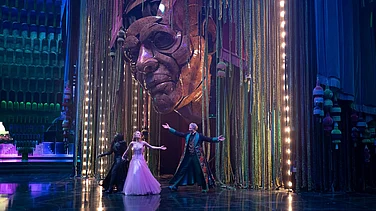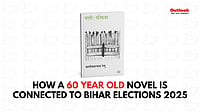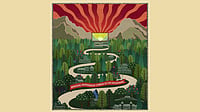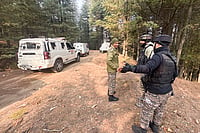
Directed by Arjun Talwar, Letters from Wolf Street had its India premiere at the Dharamshala International Film Festival (DIFF) 2025.
The film is a narrative documentary set on a single street in Warsaw, Poland, where the director lived.
Both intimate and observant, the film finds meaning in the ordinary, balancing humour, melancholy and political undercurrents.
What comes to mind when you think of a documentary set in Eastern Europe? Perhaps a sense of the mundane, faded echoes of a Soviet past in a cold country slowly embracing modernity. Now mix all of that with humour and the flavour of immigrant life. Letters from Wolf Street manages to achieve all that and more.
Arjun Talwar’s narrative documentary, originally titled Listy z Wilczej, is set on a single street in Warsaw, Poland, where the director lived. The magic lies in the way the street is showcased as a microcosm of everyday life in Europe, a migrant’s identity crisis and the search for belonging, and micro-histories.
From a Syrian exile mapping his lost city, to a lonely postman stitching together a fractured community, to a socialist shoemaker—Talwar collects fragments that come together to form a moving portrait of contemporary Europe. Both intimate and observant, the film finds meaning in the ordinary, balancing humour, melancholy and political undercurrents with painterly visuals.

The film had its India premiere at the Dharamshala International Film Festival (DIFF) 2025 held recently and was well received.
Letters from Wolf Street is a visually captivating film. Talwar’s training as a cinematographer invites the viewer to join his explorations of the neighbourhood. The camera often hovers at eye level, making the audience feel like they are actively present in the scenario, rather than just being a voyeur.
Long takes of street life, shops, cafés, or passersby allow moments to unfold naturally, letting human interactions breathe. This “patient gaze” is characteristic of a cinematographer attuned to light, movement, and composition.

Talwar has also shot himself in the film brilliantly and the viewer is made to witness him feeling the emotions he’s narrating, sometimes in the space. There are a few scenes where this really shone. Like the time when Talwar asks for the Polish flag from a right-winger in the middle of a nationalist rally, or when he does the styling of the Romani groom in the film.
The film’s crisp editing also makes for an aesthetically pleasing watch. Led by Bigna Tomschin, the film unfolds as a collage of letters, glances, and pauses that together form a lived experience of one Warsaw street. Tomschin’s approach favours rhythm over structure, and transitions through the collages happen seamlessly.
All of this is further complemented by the film’s music, composed by Aleksander Makowski, which has fragments of jazz, Polish tangos, and blues-tinged guitar. The score gives the film a feeling of being present in a quintessential Polish setup that is slow, mundane, and absurdly funny on occasion. The track “Vaarso Mein Monsoon” transports the viewer to a rainy evening in Warsaw, while “Wilcza Tango” perfectly encapsulates the movements of Tango dancers, in a scene where the director captures a Tango tutorial as he learns the steps himself.
The humour in Letters from Wolf Street feels organic, springing from small, well-observed moments. It is one of the film’s strongest suits after its technical craft. Talwar’s prodding of Poles and other immigrants through his halting Polish or overly polite questions produce puzzled or teasing responses. Humour in the film then comes out of cultural differences and the awkwardness it creates, and sometimes it’s via the dry wit of the filmmaker’s own observations. At other times, the funniness is purely situational.
For example, Talwar films a neighbour meticulously reconstructing Damascus in a software project, and the humour arises from the earnest seriousness of the project juxtaposed with Talwar’s bemused commentary. On another occasion, Talwar attempts small talk with regulars who respond with short, sometimes blunt answers. His attempts at connecting are slightly fumbling, but persistent, and the comedy is brought out by the awkwardness of human interaction.
The dashes of humour also work as a fine counterbalance to the heavier themes in the film such as the grief of having lost a dear friend and making sense of Europe as an immigrant.
Letters from Wolf Street is worth watching for anyone interested in migration narratives, cultural identity in Europe, or the ways everyday urban spaces mirror broader social currents. It beautifully combines personal memoir, sociological insight, and striking visual aesthetics. For viewers curious about Poland’s evolving society, particularly Warsaw, the film provides a fresh perspective through the eyes of an Indian immigrant director, revealing nuances of a city and community often overlooked in mainstream portrayals.


























